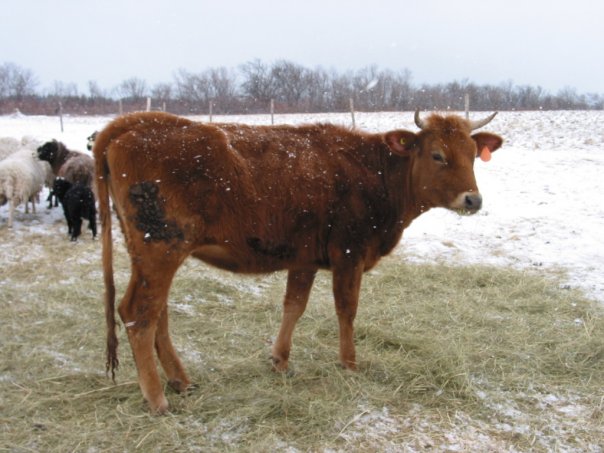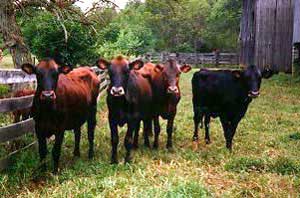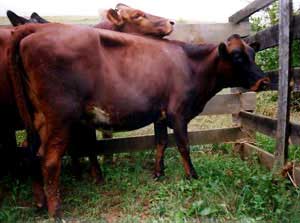Canadienne Cattle
Also known by: Black Canadian, Canadian, French Canadian.
Canadienne cattle were developed in Canada primarily from animals imported from Normandy and Brittany during the 16th and 17th century. This stock was blended on this continent and selected for hardiness and productivity in the New World. The first regular importations of cattle into Canada were in 1608-1610 from Normandy in France. Later importations came from Brittany and Gascony. The population remained largely closed to other breeds and eventually became known as the Canadienne.
Unfortunately, the breed's characteristics were not highly valued and by the mid-1800's a number of influential farmers were encouraging the crossing of the native Canadienne with bigger imported breeds less adapted to local environmental conditions. In 1895 a small group of concerned breeders and academics joined to form the Canadienne Cattle Breeders Association. In recent years the Quebec government has initiated several programs aimed at conserving the breed and encouraging the breeders to continue. Most breeders and their cattle continue to be found in the province of Quebec.
The Canadienne is well adapted to the Canadian climate, soil and herbage and does not require the importation of expensive foods or intensive management. It is small (cows weigh 1000-1100 pounds), long-lived and has an exceptionally docile temperament. Canadiennes produce good quantities of quality milk in relation to their own body size and food requirements. The meat tends to be lean, and the light bone results in a high percentage of usable meat in relation to total body weight.
Born pale, Canadienne cattle become black or dark brown, often with paler muzzle, side, and udder or scrotum. There may occasionally be white on the udder, stomach and chest.
Status
Critically Endangered
References
American Livestock Breeds Notebook. 1989. The Livestock Conservancy, Pittsboro, NC.
Mason, I.L. 1996. A World Dictionary of Livestock Breeds, Types and Varieties. Fourth Edition. C.A.B International. 273 pp.




